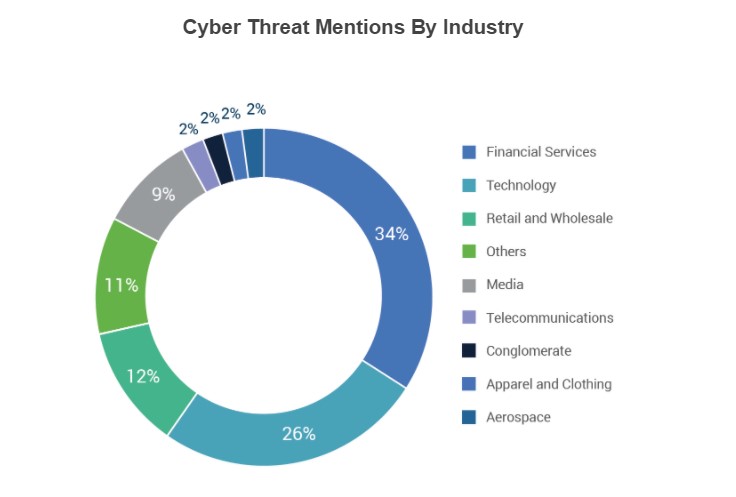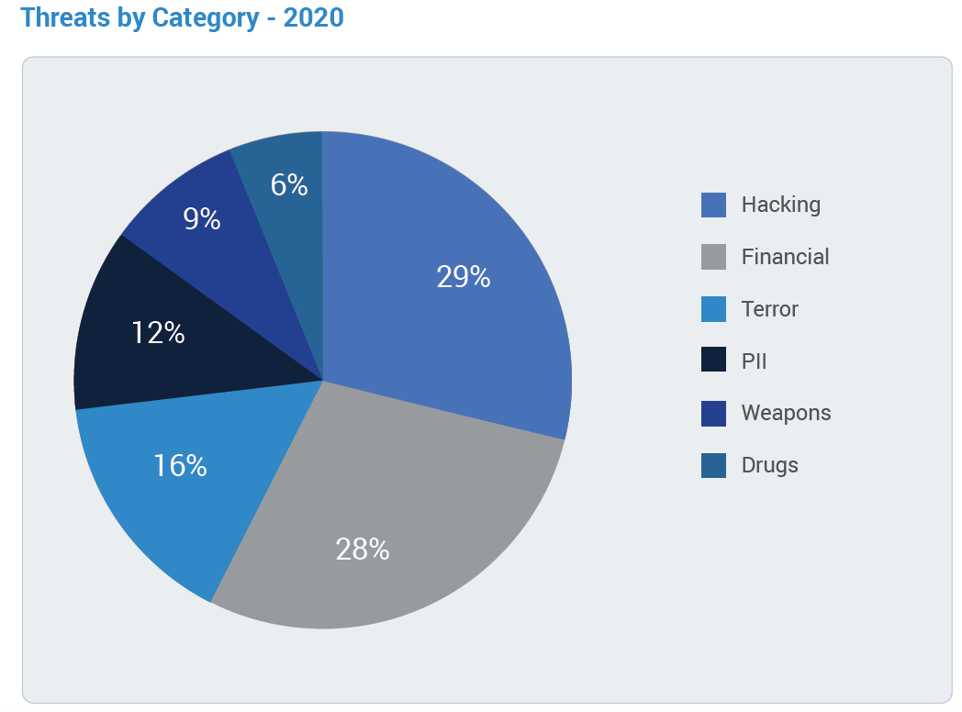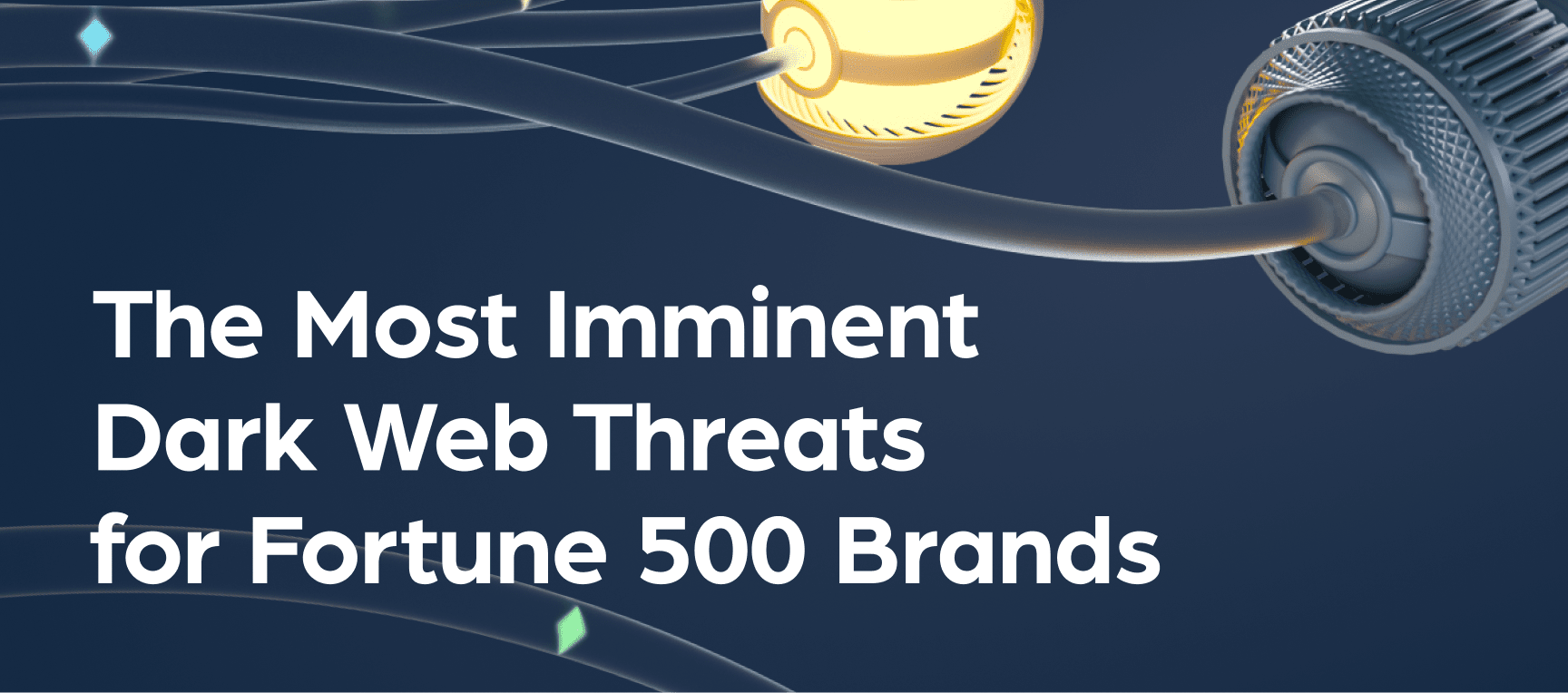Did you know that 98% of Fortune 500 companies were mentioned in the dark web in the last 12 months?
Today, digital assets of organizations across almost all industries are at risk. Experts estimate that in 2021, a new cybersecurity attack will occur every 11 seconds. Attackers will also focus on data breaches that compromise personally identifiable information (PII).
A Look into Last Year’s Dark Web Threats
Webz.io recently released a comprehensive report covering cyber threats aimed at Fortune 500 companies in multiple industries. Research and conclusions were based on dark web data found using Webz’s Cyber API and Data Breach Detection API.
The report breaks down the mention of cyber threats for nine different industries:

It also divided the threats into six major categories:

Here’s what Webz’s data discovered:
- Hacking and financial fraud were the most common threats
- Almost 72% of all cyber threat mentions are in the financial, technology and retail, and wholesale industries
- 2.5% of cyber threat mentions in the financial, PII or hacking categories mention Ebay or Walmart
- Almost 40% of the cyber threat mentions of Pfizer are about the illegal trade of its medications
- 12% of cyber threat mentions of Apple are illegal attempts at selling its products
- 78% of cyber threat mentions of SIM swapping are guides and methods to perform this type of scam
The Need for Dark Web Data Collection
Monitoring the dark web presents many challenges for companies. First, the data is difficult to access. Paywalls, logins and admins prevent you from accessing the data you need. Although public dark web search engines and directories allow searches based on specific keywords or subjects, comprehensive coverage of the dark web can be difficult to achieve. This is not only due to the sheer magnitude of the content, but also that it is ever-expanding. That means continuously discovering and monitoring ever-expanding content on networks such as TOR, Discord, and Telegram and others is no small feat. As a result, content on these public search engines is not updated regularly. It is also not possible to filter results based on specific parameters (publication date, author, keywords, etc).
In contrast, Webz’s data coverage includes extensive coverage of the dark web, including constant crawling of customized sources, as well as discovering new ones with manual and automated measures. This coverage ranges from marketplaces to networks and messaging platforms. Network coverage includes millions of posts from TOR, OpenBazaar, Zeronet and I2P, among others. Messaging platform coverage includes Telegram, IRC, and Discord.
The API also has granular filtering capabilities, so you can search for the exact posts that put your customers or company at risk. This includes searching by an email domain, IP address, or specific names. You can also filter results by timeframe or source, and exclude irrelevant results.
Why Global Companies Need Cyber Risk Monitoring
In the dark web, it’s the biggest brands that are the most vulnerable. Brands need continuous access to dark web data to identify and fight against these threats. This is crucial for their ability to keep an eye out for threat signals against their brand in the dark web.
Once these threats are identified, companies can then take action. That might include installing relevant IT protection against specific threats. Or it might be as simple as educating employees on how to identify, suspect or handle different attack attempts, such as phishing. These defensive actions can minimize the damage or even prevent actual attacks or hackers from committing fraud to your organization.
Whatever the action taken, risk assessment is the first step brands should take in mitigating against these dark web threats. Implementing a cyber risk management strategy helps identify the threats organizations face. The right risk management, powered by precise dark web data, assists in addressing these risks. Together they can work to put the correct defenses in place to mitigate against future attacks.



